6.6 Importing the Schema
Designer allows you to import the schema from your production environment to do in-depth testing with the Identity Manager drivers.
6.6.1 Importing the Schema from the Identity Vault
-
In Designer, select an Identity Vault, then select .
-
In the Select Source for Import dialog box, specify the access information to access the server that has the schema to import, then click .
Specify the appropriate host name (or IP address), username, and password to access the server.
NOTE:The specified user must have administrative rights to the schema.
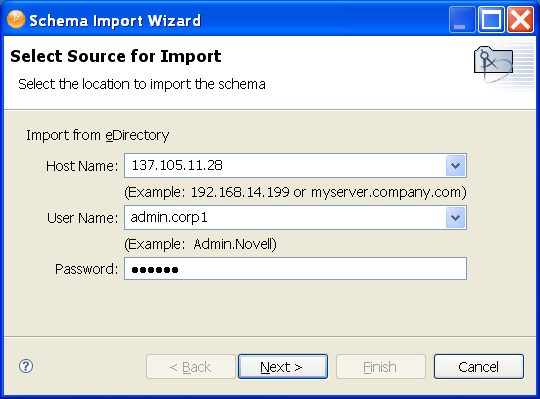
-
In the Select Classes and Attributes for Import page, select the classes and attributes to import into the project, then click .

Import All Associations: Enables you to associate the selected attributes with the classes that might already exist in Designer. If you do not select this box, the new attributes that should be associated with the class are not associated.
For example, if the attribute of Employee Photo is associated with the User class, and you do not select , Employee Photo is not associated with the User class.
View Differences: Enables you to view the differences in the schema between the Identity Vault and Designer.
When you click , Designer opens the Schema Differences page, where you can select those differences between the live Identity Vault and the Identity Vault in your project.
You can select schema differences individually, or click to import all the schema differences.
Click to move the selected class and attribute import selections into the Select Classes and Attributes for Import page.
-
Click Next to bring up the Import Summary page, where you can review classes and attributes to import into the project. Then click .
If errors occur during the import process, the Import Messages page lists them.

-
On the Import Messages page of the Schema Import Wizard, click .
If you want to save the differences to a log file, click . This brings up the Save As dialog box, where you can choose a filename and directory to store the file in.
-
Click , then click .
6.6.2 Importing the Schema from a File
When you created an Identity Vault in the Modeler, Designer created a base schema in your project. If a .sch file or .ldif file has been saved, you can quickly add classes and attributes for your drivers by importing classes and attributes from the saved file.
Importing the Schema from a .sch File
-
In the Modeler, right-click the Identity Vault that will use the imported .sch file.
-
Select .
-
Select
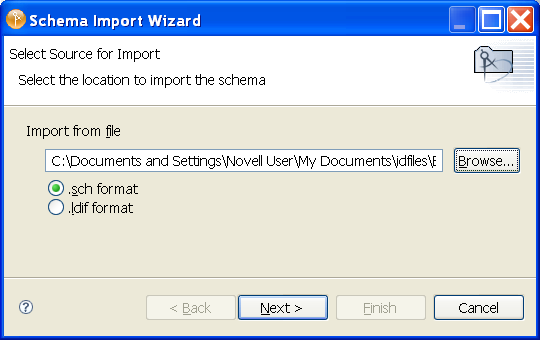
-
Browse to and select the file that you want to use, then click .
-
Click , then review the .sch file.
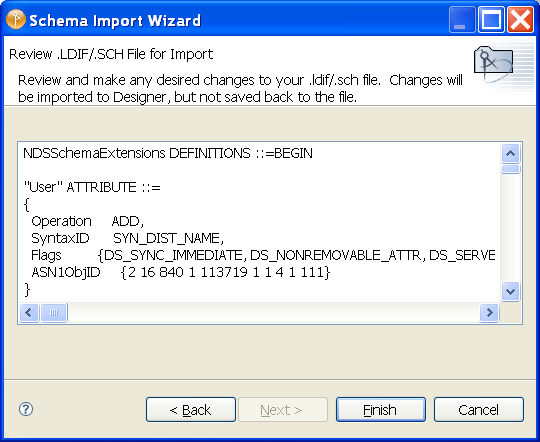
-
Make changes if necessary, then click .
-
Click .
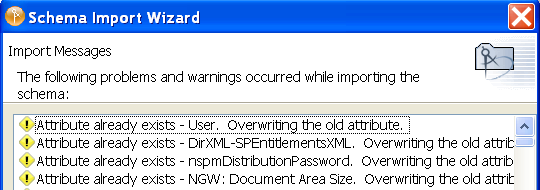
If errors occur, a deployment summary screen lists them.
Importing the Schema from an LDIF File
-
In the Modeler, right-click the Identity Vault that will use the imported .ldif file.
-
Select .
-
Select .
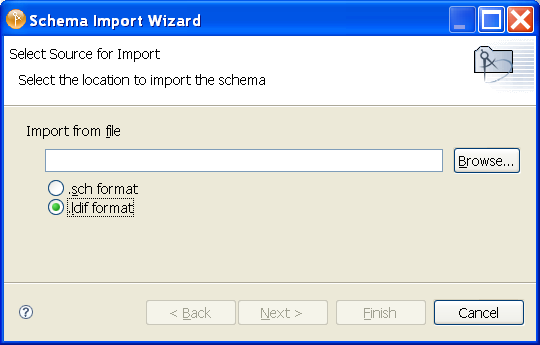
-
Specify, or browse to, the .ldif file that you want to use, then click .
-
Click , then review the .ldif file.
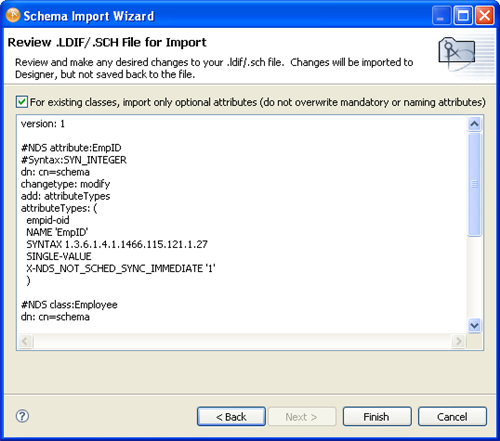
-
Make changes if necessary, then click .
-
If you receive a Warning box, read the message and click .
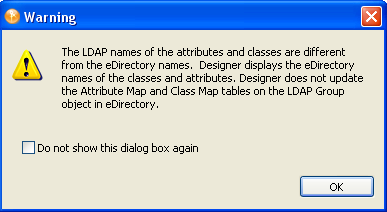
The class and attribute names in Designer are the Identity Vault (eDirectory) names. The names for the classes and attributes in the LDIF file are the LDAP names. The Identity Vault names differ from the LDAP names. Verify that the names listed in the LDAP file are correct for your environment before importing the file. For a list of Identity Vault class and attribute names mapped to LDAP class and attribute names, see Section 6.8, Mapping Identity Vault to an LDAP Schema.
-
Click .

If errors occur, a deployment summary dialog box lists them.